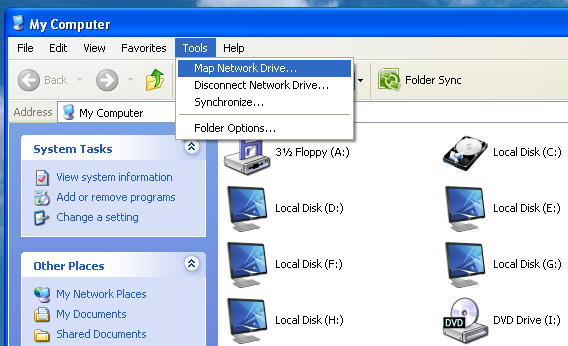

Its funny how you can use none-windows filesystem drives in windows, but in wsl/linux, you can only see windows filesystem drives. This drvfs will only understand windows native drvie format. It will likewise fail if the underlying filesystem you are trying to mount is linux (ext2, ext3. Since the file system I'm trying to use is apple file system (apfs), the drvfs cannot use it. The mount works well with other network drives AS LONG AS the filesystem is a windows (NTFS, FAT32, etc) filesystem. You can't see the content of the folder /mnt/z. The mount command is successful, but in fact the mount "failed". Or, more directly sudo mount -t drvfs '\\vmware-host\Shared Folder\Public' /mnt/z The suggested method is to (adjust actual drive letter and folder names as needed) sudo mkdir /mnt/z The problem is when you are using bash in WSL. On Windows 10, the network drive for the shared folder is \vmware-host\Shared Folder\Public\ and is accessible from the windows 10, and is also mounted on Z: drive as well. I am sharing a folder on my Mac (~/Public) with all my fusion guest O/S, and it works seemlessly with any linux/bsd guest OSes. I installed WSL (ubuntu) in the windows 10. I just ran across this issue recently where I have a Mac host running a vmware fusion with windows 10 installed as a guest OS. Type net.exe help use for more information on how to use this command.

The net use command can be invoked from inside WSL (using net.exe use) via interop. If you need to use different credentials to connect to the server, specify them in Windows by navigating to the share in File Explorer, using the Windows Credential Manager, or the net use command.


WSL does not have any way to specify which credentials to use to connect to a network share. If you don't surround the UNC path with single quotes, you need to escape the backslashes by doubling them (e.g. Note the single quotes around the UNC path these are necessary to prevent the need to escape the backslashes. $ sudo mount -t drvfs '\\server\share' /mnt/share However, it's also possible to mount them directly using a UNC path: $ sudo mkdir /mnt/share When you wish to mount a network location, you can of course create a mapped network drive in Windows and mount that as indicated above. When you wish to unmount the drive, for example so you can safely remove it, run the following command: $ sudo umount /mnt/d Now, you will be able to access the files of your D: drive under /mnt/d. For example, to mount a removable drive D: as /mnt/d directory, run the following commands: $ sudo mkdir /mnt/d In order to mount a Windows drive using DrvFs, you can use the regular Linux mount command. From the link bleater posted Mounting DrvFs


 0 kommentar(er)
0 kommentar(er)
